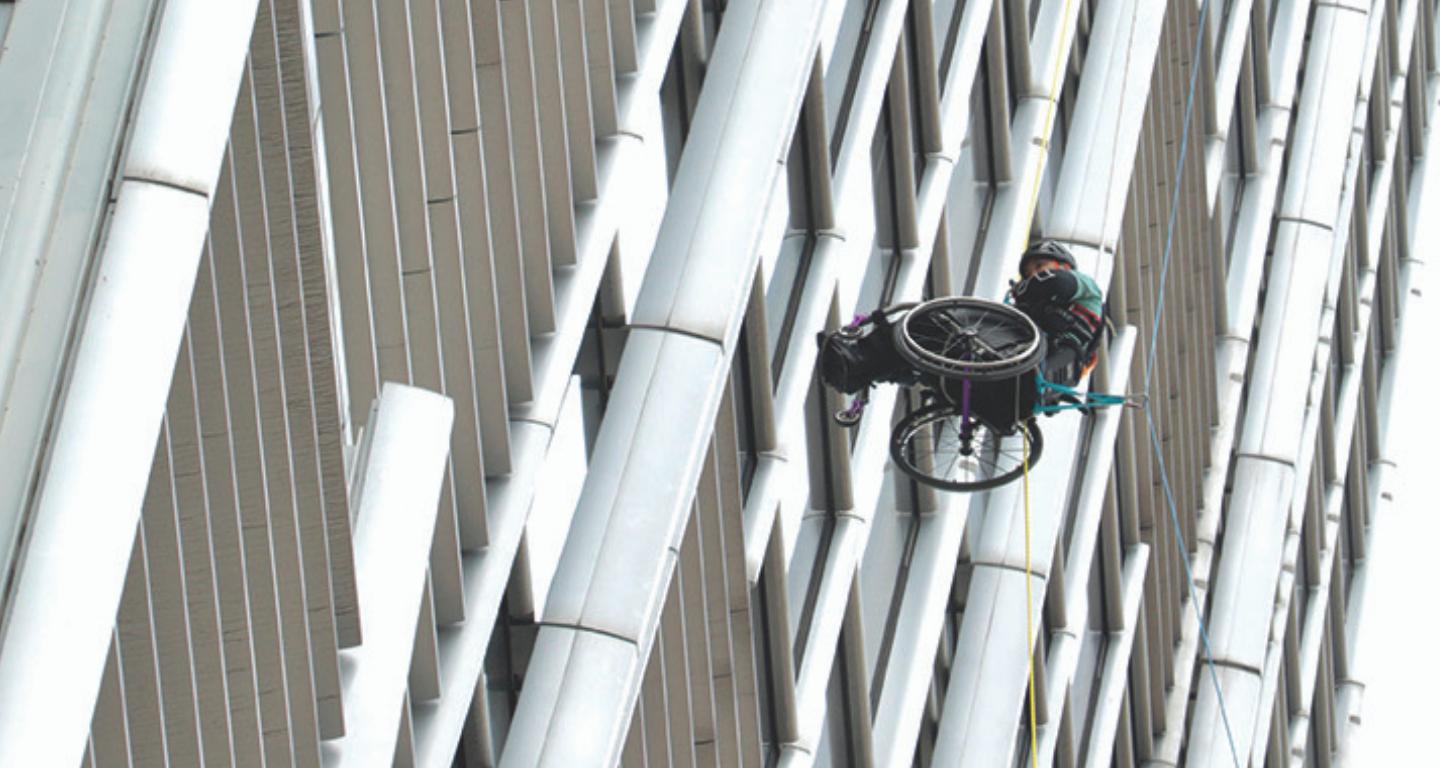Since then, Lai who has been using a wheelchair, has walked out of the trough of life with a strong will. In 2016, with the assistance of a team of volunteers, he climbed to the top of the Lion Rock in a wheelchair, using a rope to realise his dream. That day was also the fifth anniversary of the traffic accident. His story was filmed into a documentary called CRUX. His dramatic life was made into a movie called Lion Rock. The unprecedented climb of Nina Tower will also be featured in a documentary called Never Settle.
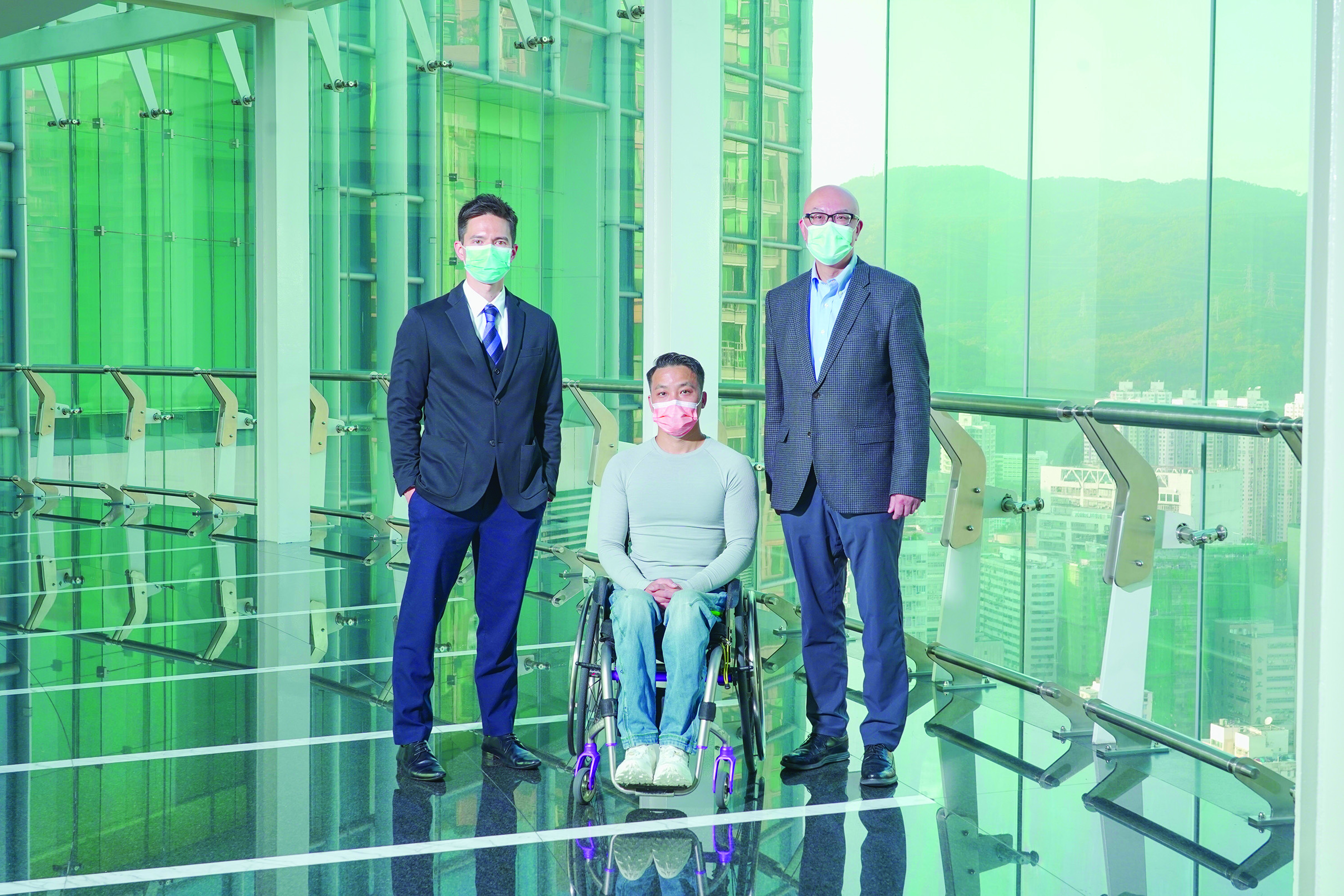
In January, Lai Chi-wai took on the challenge of climbing Nina Tower, Tsuen Wan’s landmark building. In his eyes, the 300-odd metre Nina Tower is more than a building composed of concrete and glass. Lai, co-founder of Ignite Community Services and the climber, compares climbing the tower to “playing on a pirate ship” over 70 storeys above the ground, recalling it as an exciting experience that lasts a lifetime.
Relying on the strength of his hands and putting his faith in a specially designed rope system that bore his 150-pounds as well as the weight of his wheelchair, Lai pulled himself slowly up the tower. Sometimes he swayed in gusty winds and the ropes tangled easily. “It was like twisting a towel,” he said. “I was stuck in the middle of nowhere. I couldn’t get up or down.” As his wheelchair was tossed against the building by the wind, Lai continued to look up to the highest point of the tower. Throughout his epic climb, sweat and tears streamed down his face, while behind him the bustle of the cityscape rumbled on.
The HKU “Get up and Walk” programme
Lai returned to the 41st floor of Nina Tower for an interview with Donald Choi, Executive Director and Chief Executive Officer of Chinachem Group. Also present was Lai’s attending doctor Dr Paul Koljonen.
Rising to over 300 metres tall, Nina Tower is even taller than the Lion Rock that Lai climbed four years ago and was a completely different test. In taking on the climb, Lai wanted to help the Department of Orthopaedics and Traumatology of The University of Hong Kong raise funds for the “Get up and Walk” programme. The objective of the programme is to develop a wearable robotic exoskeleton for rehabilitation of patients suffering from spinal cord injuries as well as to conduct relevant research, so that they may have the opportunity to stand up and walk again. Chinachem Group pledged to donate an amount equivalent to the total raised by the campaign from the public on a dollar-for-dollar basis. Thanks to the incredible outpouring of support from the public, the entire project raised more than HK$7.7 million, including Chinachem Group’s matching donation of over HK$3.8 million.
- More than HK$7.7m raised
- HK$3.8m dollar-for-dollar matching funds
Chinachem Group has donated more than HK$3.8 million of funds on a dollar-for-dollar matching basis to the “Get up and Walk” programme. Money raised from the programme will go towards the Department of Orthopaedics and Traumatology of The University of Hong Kong to support the rehabilitation of patients with spinal cord injuries. This includes the trial use of robotic exoskeletons as a means of rehabilitation and relevant clinical services and research works.
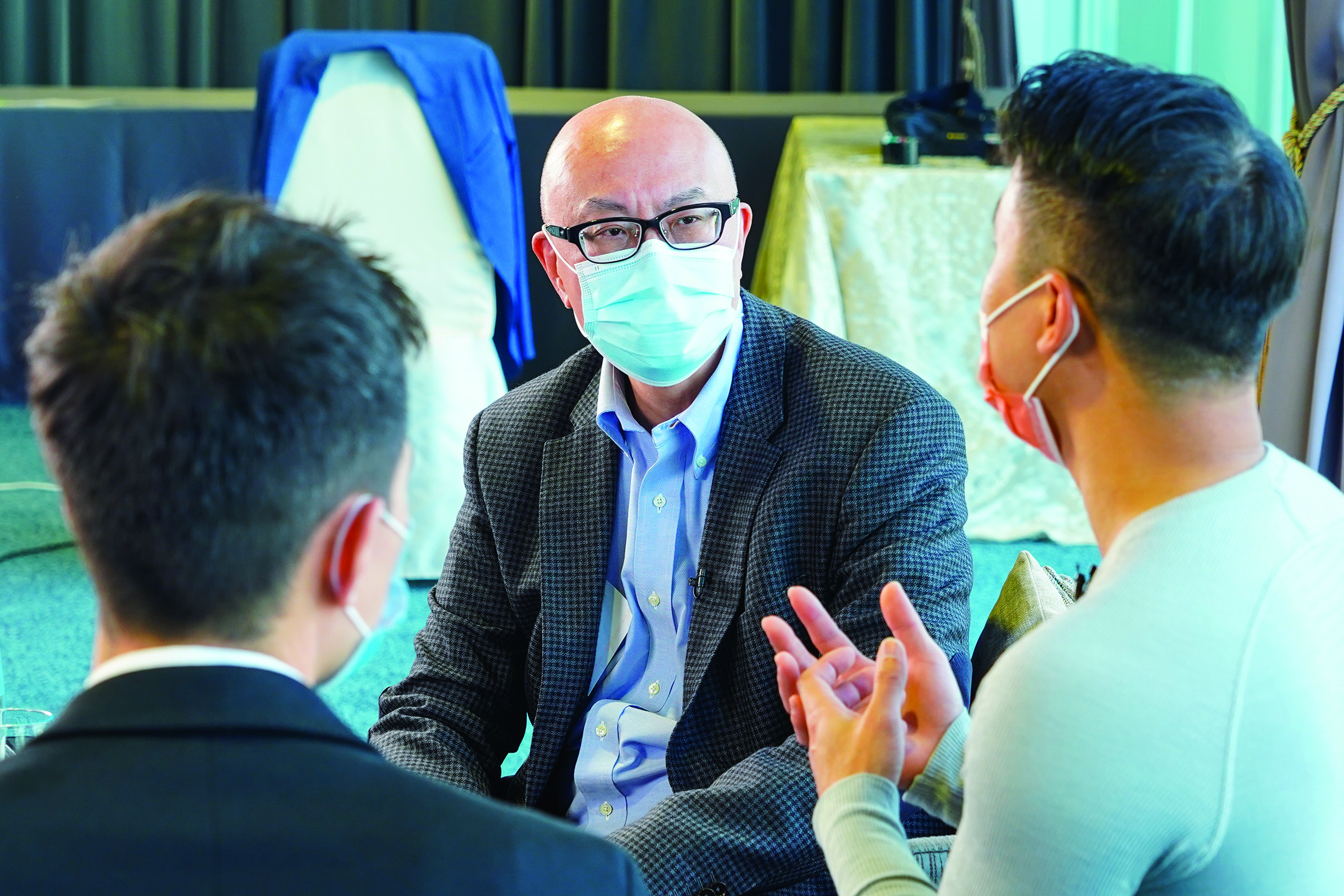
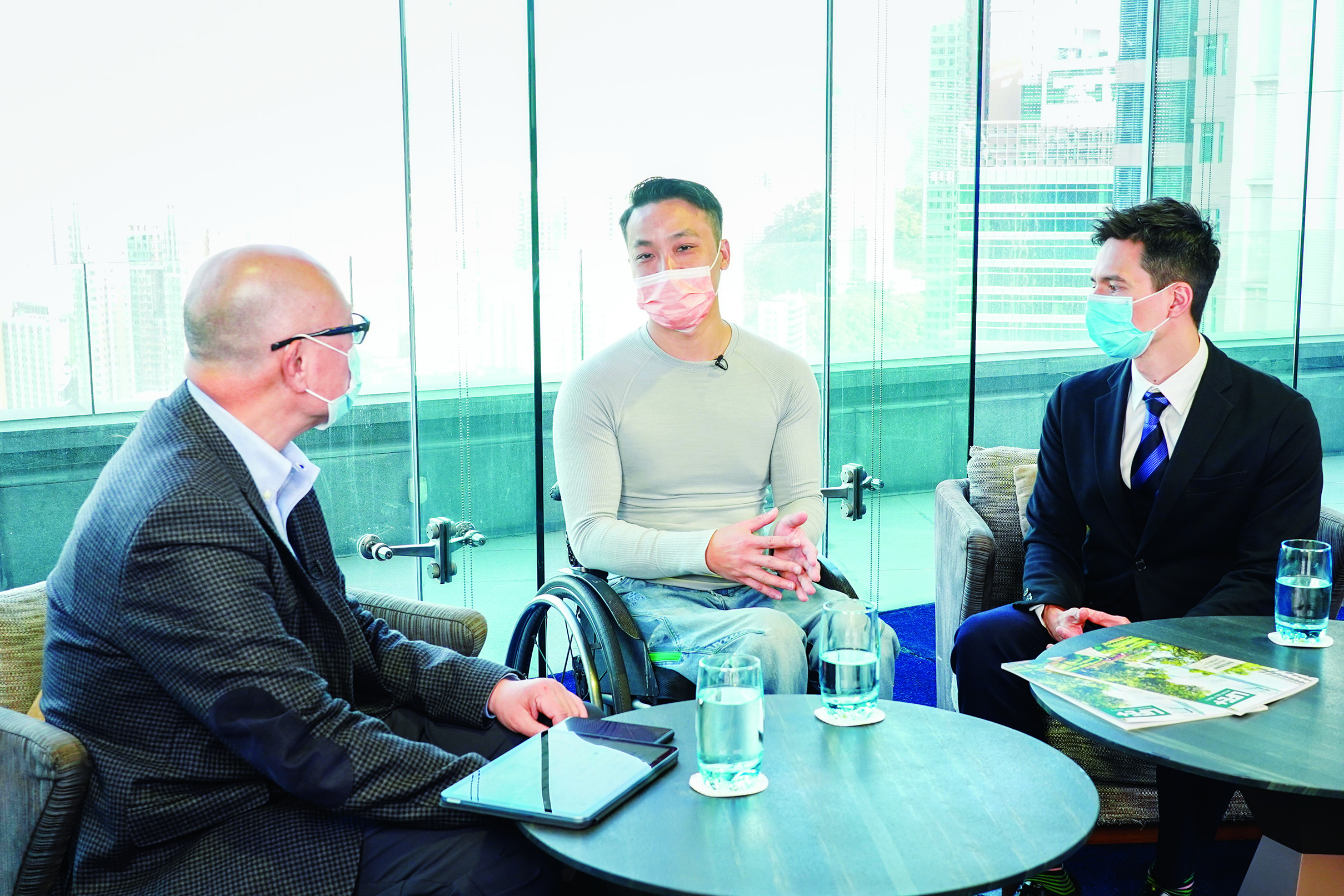

After receiving significant positive feedback from the media and the public, I realise that though I did not complete the challenge, everybody could feel my can-do spirit at that very moment. I didn’t give up easily.
-
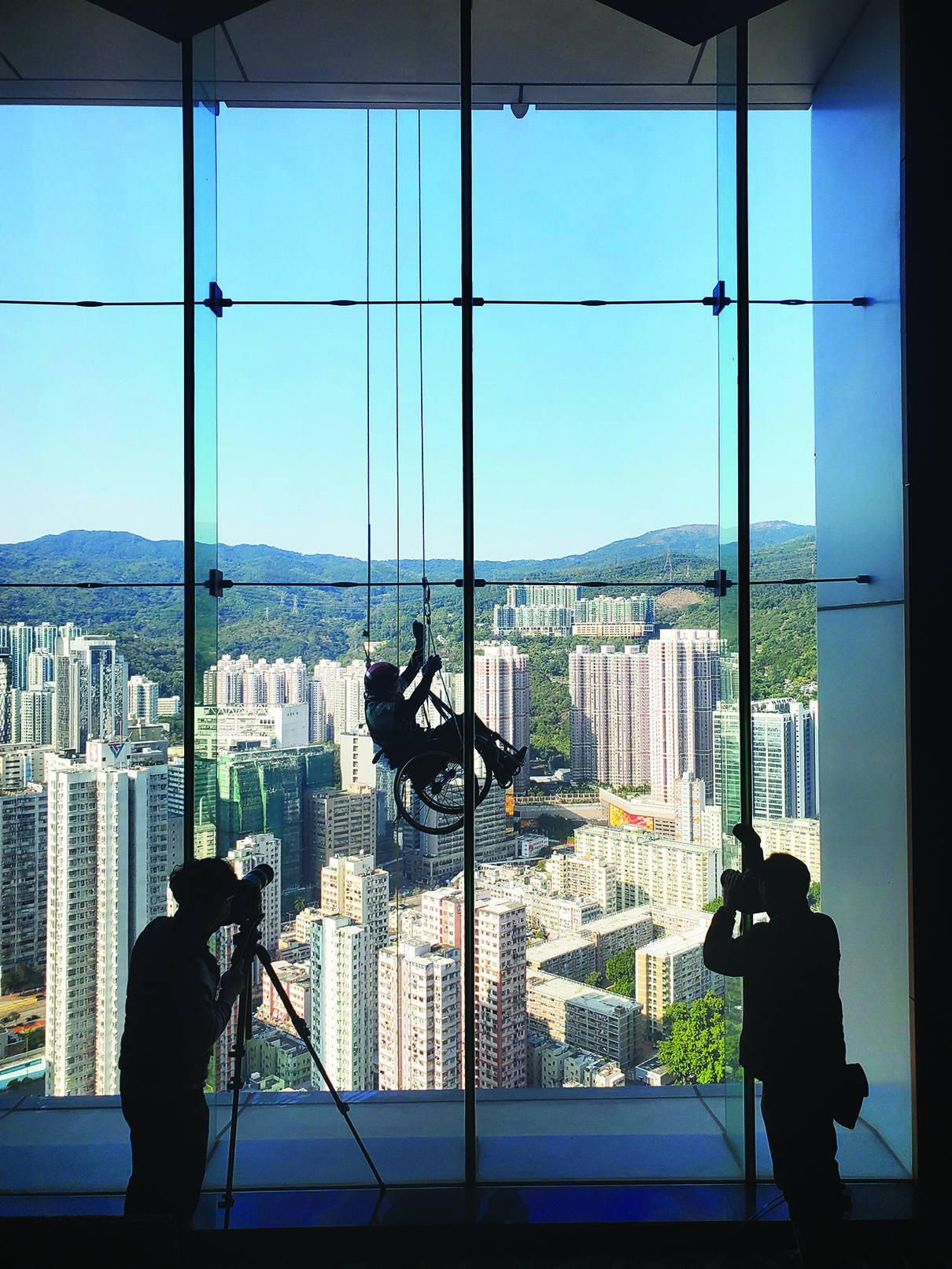
Climbing out of loss
Choi sincerely complimented Lai: “You have done a lot of things that ordinary people can’t do. I’m very touched.” He was also curious about Lai’s most different characteristics compared with patients with similar injuries. Dr Koljonen replied: “Spinal cord injury is usually caused by a sudden accident. The patient loses everything in a blink of an eye, including the ability to move around on their own and work. It’s never easy to get up again and regain the will to carry on.”
Dr Koljonen is currently an Honorary Clinical Assistant Professor at the Department of Orthopaedics & Traumatology at HKU. To raise a patient’s morale and help him or her return to life, he said that it requires the efforts of not only the patient, the doctor, or the hospital, but “the collaboration of many different parties”. He was inspired by Lai’s determination. “The patient himself has done his best. Why don’t we do it together and do it to our best? Lai’s determination means a lot to both himself and the medical team.” He smiled at Lai, and said: “I also want to know, why are you so amazing?” -
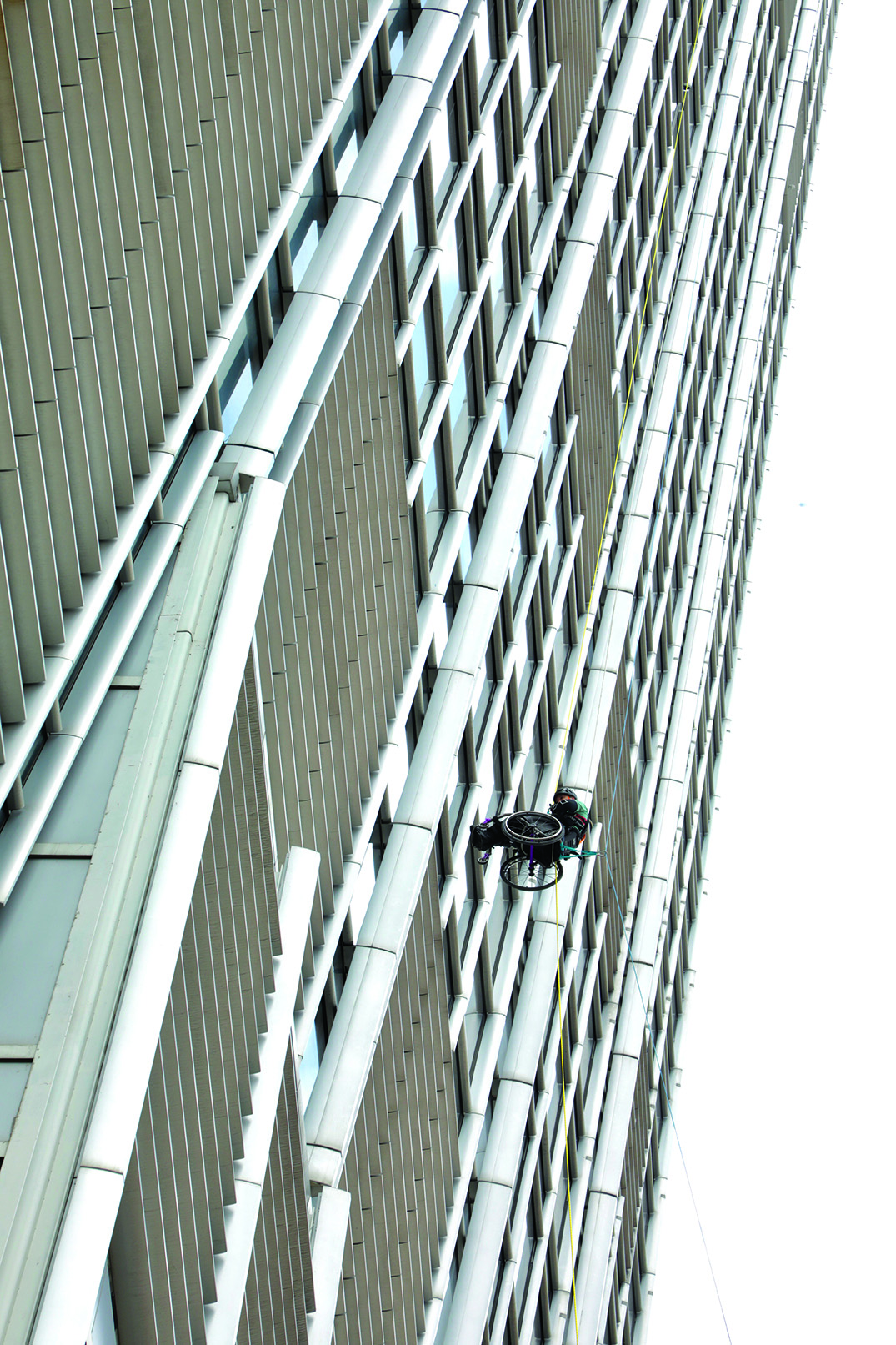
Moving beyond former glories
Before his accident, Lai had been a world-class rock climber. At his best, he ranked eighth in the world. He was the winner of the Cheung Chau Bun Tower Scramble and is also known as “Asia’s King of Rock-Climbing”. “As an athlete, it was extremely difficult to accept reality after the accident,” Lai said. When he woke up after the operation and learnt that his lower body was paralysed, he cried himself to sleep for two nights. His wife was pregnant, and the couple expected their baby to be delivered in three months. “But I wanted to welcome my baby. I didn’t want my child to have low self-esteem. At the same time, I got so much support and encouragement from my family, coaches, friends and many locals.”
After two nights of tears, Lai was motivated by his strong determination to recover. He started to use a rubber band for training by his bed as he wanted to restore the strength of his arms and upper body as soon as possible. “I had died once already; I couldn’t die again. Since my upper body could move, I decided to let go of my past glory. I should move on to a new life, I told myself.” Three or four months after the accident, Lai asked to be discharged from the hospital and returned to life in the city. During that period, he faced many challenges. He kept thinking about what else he could do apart from being an athlete. When he decided to try to share his story with others, he discovered unexpected rewards. “It turns out that sincere dialogue between people is key to cohesion. It offers opportunities to change people’s views and at the same time enables me to regain my strength.”
Lai unexpectedly discovered that he has a power to bring different people from the public together. Many doctors, therapists, and even his audience wanted to give assistance after hearing his story. “There are always people out there who want to help me. They gave me a lot of power and I want to leverage that power to help more people.” -
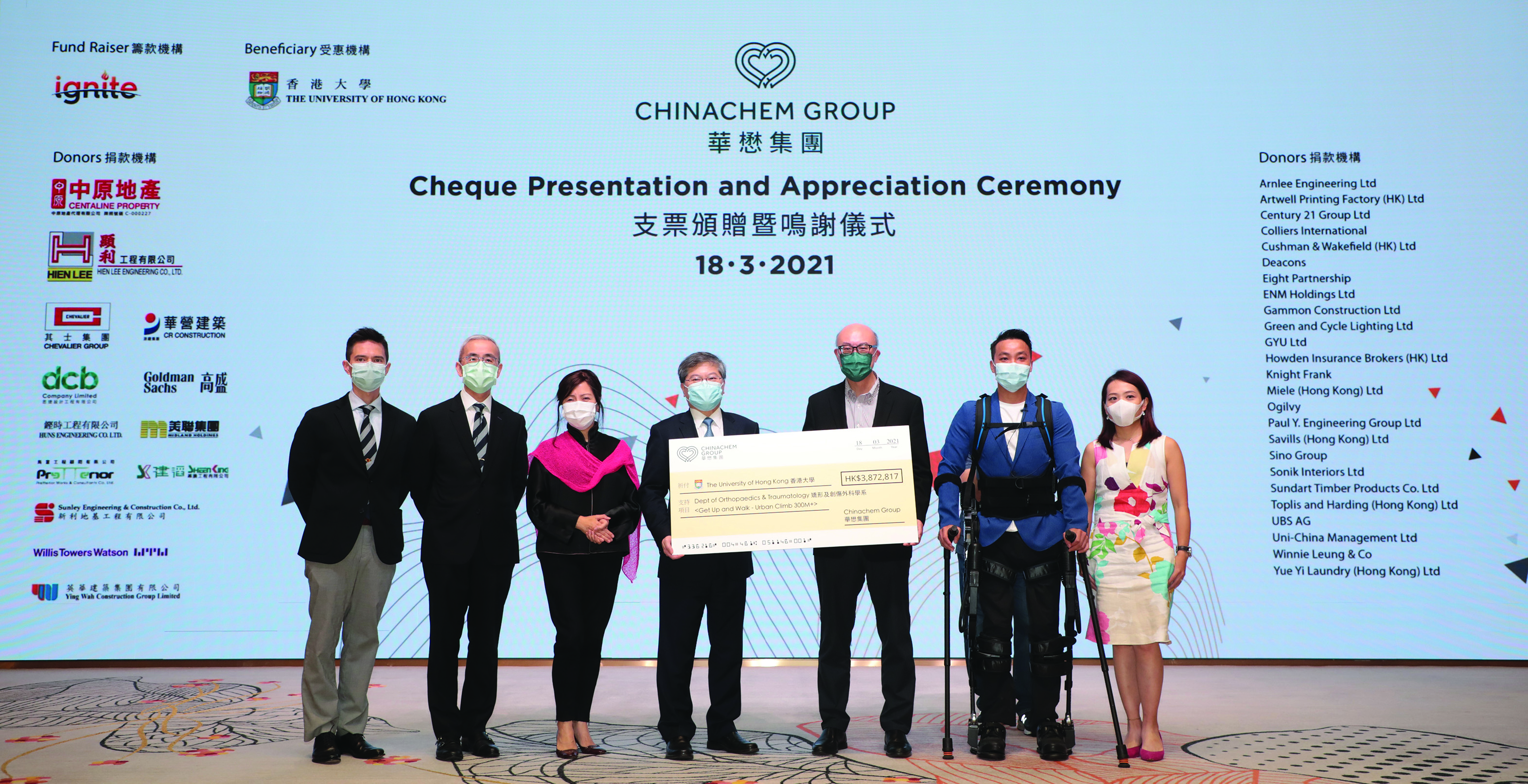
A tough but important ending
Lai spent more than ten hours climbing Nina Tower. When he reached the 250-metre height, he wrestled with blustering winds, which had changed direction, for more than an hour. He finally was forced to stop as it became increasingly dangerous for himself and the team behind him. Even though he had failed to reach the summit, he still received support from people from around the world. “Patients from as far away as Mauritius and India encouraged me and shared their stories with me. In addition to helping Hong Kong patients, patients in other parts of the world said they felt motivated and empowered to live a fulfilling life through what I achieved. It was very heart-warming.”
Lai said he had not expected the climb to be forced to end because of blustery winds. After making the decision to stop, he was extremely disappointed. “If I continued to struggle, I might have lost consciousness, and would put those coming to rescue me in danger.” He paused and continued: “At that moment I really wanted to cry, but I told myself to hold on and be tough in front of the cameras.”
It was not until a few days after he thought through the situation that he realised that although he felt that he had failed everyone’s expectations, he had received significant positive feedback from the media and the public. “Though I did not complete the challenge, everybody could feel my can-do spirit at that very moment. I didn’t give up easily.” Finally, he came to see that although it was not the ending he expected, it was a “beautiful ending” nevertheless.
